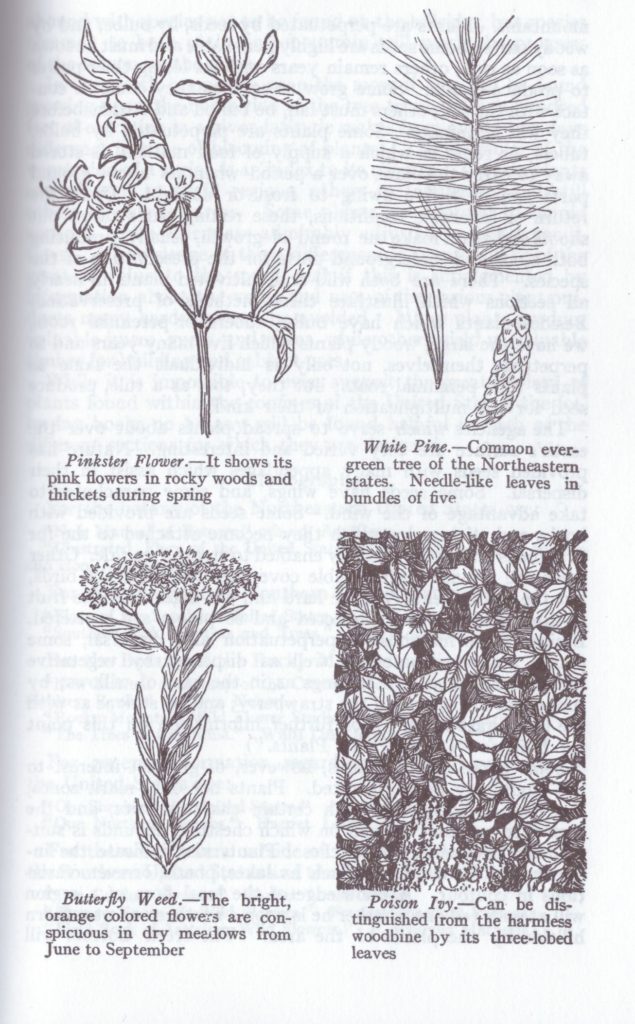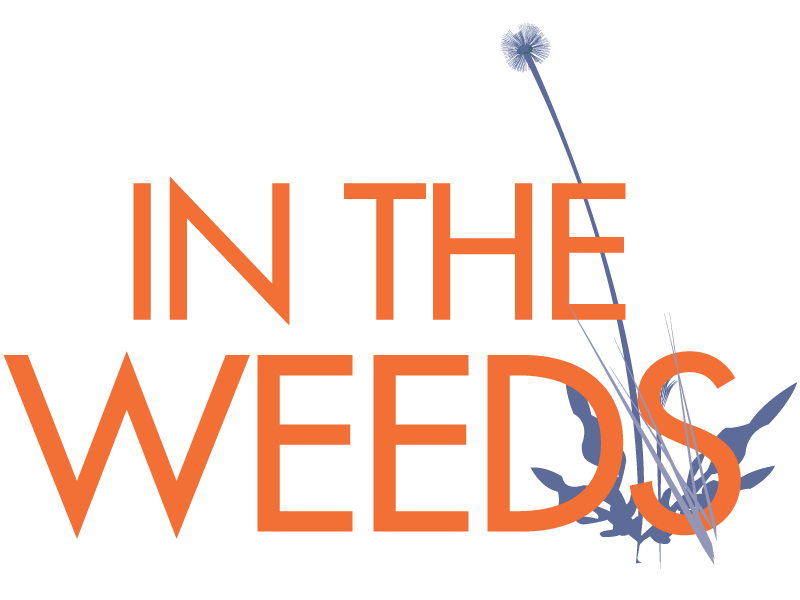
The First Edition, 1911
I asked Carolyn Summers, a landscape designer and native plant expert, what she thought could be done to address what many botanical gardens are calling “plant blindness” and which I likened to a form of illiteracy.
This ignorance about plants is relatively new, she pointed out. Take a look at an old Boy Scout manual, she advised. So I did.
In the first edition of the Boy Scouts Handbook, published in 1911, there’s a section on learning common North American trees, as well as flowers, ferns and grasses.
It’s part of what the Boy Scouts call “Woodcraft,” a term the Merriam Webster dictionary defines as “skill and practice in anything related to the woods and especially in maintaining oneself and making one’s way in the woods.”
According to the Handbook, a boy scout should learn which mushrooms are edible; which poisonous; how to recognize poison ivy; how plants measure the seasons and mark altitude and latitude; which wood makes for the best camp fires.
Knowledge is thus intermingled with practice. The word “craft,” one of those words we’ve inherited from pre-Christian Europe, implies physical work but also a kind of power, a skill. “Woodcraft” conveys that there’s a power to knowing about plants and animals; it reminds us of the strength to be found in developing an informed relationship to the natural world.
But the Handbook also decribes woodcraft as a form of empathy:
[Woodcraft] means not only the following of tracks and other signs, but it means to be able to read them. To tell how fast the animal which made the tracks was going; to tell whether he was frightned, suspicious or otherwise.
[…]
Through woodcraft then, a boy may train his eye, and be able to observe things that otherwise would pass unnoticed. In this way he may be able to save animals from pain, as a horse from an ill-fitting harness. He may also be able to see little things which may give him the clew [sic] to great things and so be able to prevent harm and crime. (5-6)
There’s a lofty ideal of manhood that wafts through the pages of this book that makes me wistful, even if I know its limitations. (If you get your hands on this book, read the section on Chivalry.)
But how lovely to think that to come to know the natural world is not only to be able to navigate it – and what young boy or girl wouldn’t glory in this power – but also to be able to feel what the other creatures are feeling and, thus, “to prevent harm and crime.”
6 comments on “Woodcraft”
Comments are closed.

Thank you for this thoughtful essay. I was a Girl Scout leader for any years and was shocked that so many children knew so little about the flowers, birds and trees in their neighborhood let alone in the woods. If we want the next generation to care about the environment, they will have to know about what they are caring for.
Thanks, Gloria and I apologize for my slow reply (I wasn’t getting alerts about comments). I would love to hear more about what you did as a Girl Scout teacher. I’m planning on putting together a curriculum on learning to recognize plants in the wild for my daughter’s Brownie troop.
As a grandmother and in contact with children and teenagers through volunteer work, I am moved and encouraged by this article. Instead of rushing them off to extra-curricular activities, go for a walk with your youngsters. Explore and learn together the name of tress, bushes and flowers in your neighborhood. Take photos and look up the information. Check out on http://www.ojaiyouthopera.org the story of an opera that to premiere on May 18 & 19 in Ojai, CA. The title “Nightingale and the Tower” refers to the conflict young people must navigate between a relationship with Nature and the encroaching world of technology
Thank you. I’ll check out the opera.
Lovely ideas. I wonder if Girl Scouts learned these skills too?
I think they did in the past but I would say less and less. I’m hoping to put together a curriculum on leaning to identify plants in the wild for my daughter’s Brownie troop. As Carolyn Summers pointed out to me, one of the things about the Girl Scouts that’s important, though, is that they have great camps that they’ve maintained. A good reason to support them!